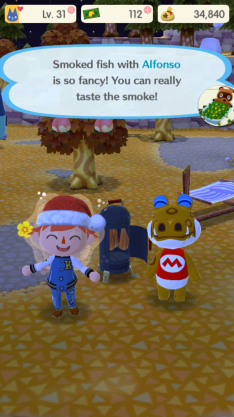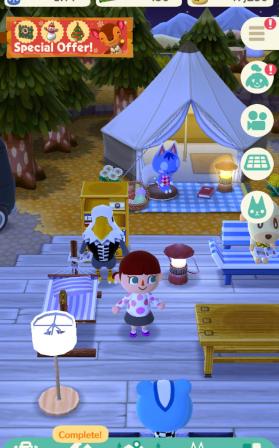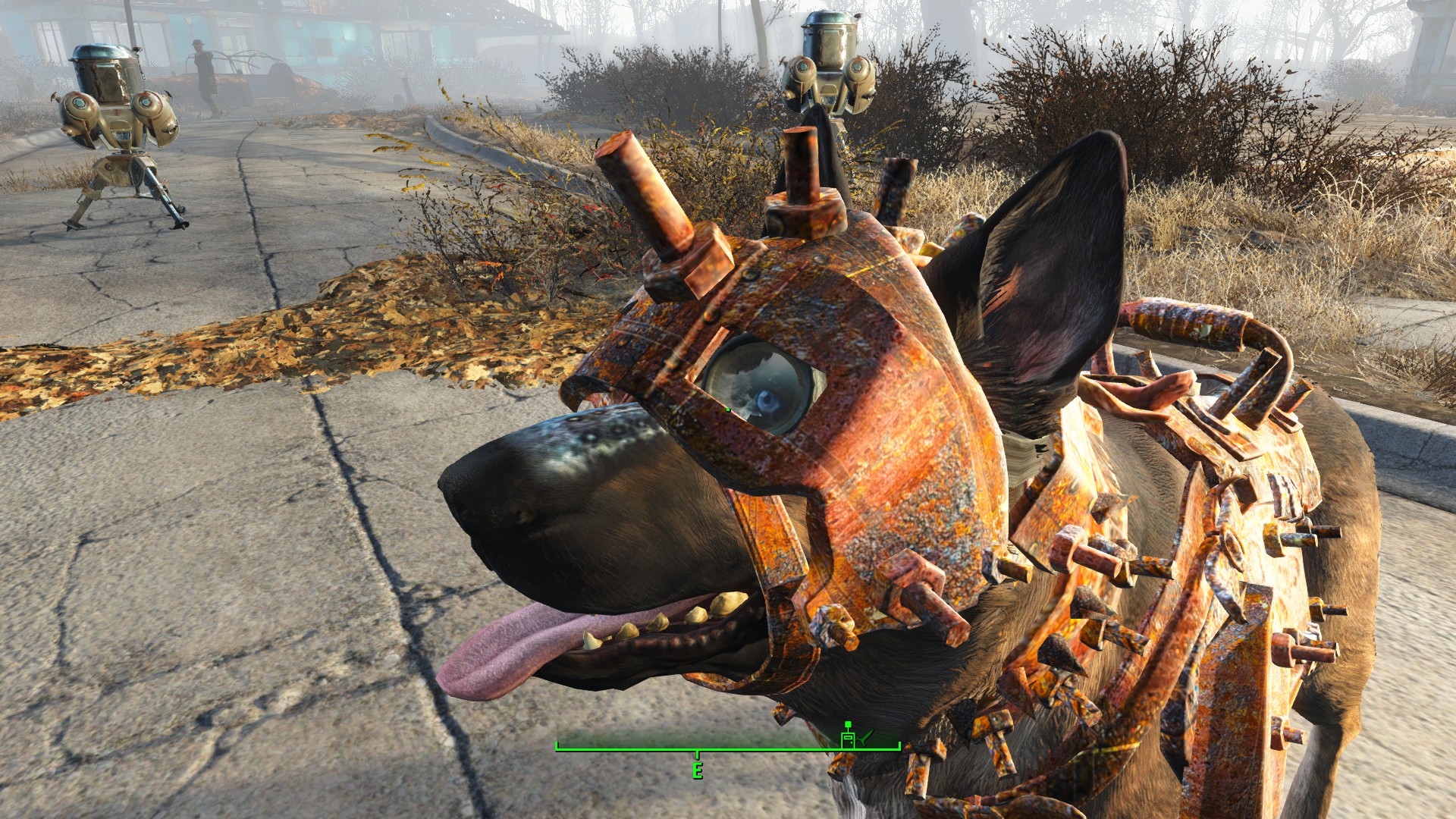
Meet Hydria, my virtual succulent garden in a pot, which is looking rather dry. I would like to think that if Hydria were located on my smartphone and not on my tablet, I would care for her better. The truth is that my forgetfulness has killed more than one plant before, and Hydria may be no different. However, although Hydria may not be the first plant to die at my hands, perhaps it is the last. After all, it is more difficult and not as terrible to destroy a virtual plant through neglect than a real one, isn’t it? I find attitudes toward the virtual world intriguing, particularly when I view the virtual world as a space to explore human responsibility and nature’s perceived disposability. Virtual forms of nature utilized for entertainment offer benefits to humans (relaxation, for example), but virtuality also encourages dangerous attitudes (insulation and human exceptionalism). In this essay, I will explore virtual representations of nature in apps and video games, specifically within farming sims, virtual pets and plants, social networking games, and video game hunting.
Before continuing, it is necessary to define and explore the complexity of the word “virtual”. According to New Keywords Dictionary, “Dictionary definitions of ‘virtual’ note it is most frequently used to refer to something that exists in the mind, is imaginary, or is created or simulated by a computer.” However, the word’s meaning has shifted to also mean “almost certain” or “nearly true” (Jones 367). Jones also suggests that VR technology holds a privileged place “as a means of mediating experience” as well as enhancing art, film, commerce, medicine, and military production (369). Although the debate over the “reality” of virtuality is ongoing, for the purpose of this essay, I propose that the issue is immaterial when focus shifts to human motivations for and modes of interaction with the virtual. In analyzing these motivations and modes, ideologies of consumerist culture and human exceptionalism are exposed. Instead of focusing on condemning or justifying certain game genres, it would be better to analyze habits of thought engendered through gaming practices and thus discover why specific genres (and gaming habits) exist in the first place.
One popular genre is the farming simulation, which tends to be relaxing while offering players a sense of accomplishment through varying levels of difficulty in management. This form of virtual nature represents a nostalgic return to the “golden age” of pre-industrial society, evoking a simpler, more wholesome life. However, I would argue that within farming sims we can see Heidegger’s concern made manifest – a mode of viewing nature as standing resource through the lens of industrial and technological development (Wolfe 4-5). Wolfe reminds us of the importance of framing as being “not simply a logical or epistemological problem, but a social and material one, with consequences”, where framing directs why, how, and what we view as important or primary (6). In farming sims, the primacy of human control and management of nature’s resources is naturalized and induces a sense of accomplishment within players, accounting for the genre’s popularity. On PC and consoles, such as the PS4, one can enjoy a variety of farming simulations including Stardew Valley, Banished and the Rune Factory series. The Google Play Store has countless farming simulations and farming games with titles such as Farmville, Farming Simulator 18, Harvest Master, Hay Day, and Township.
Farmville 2: Country Escape, a charming farming simulation app linked to Facebook, guides the player into a cutesy, idyllic farm setting (see fig. 1).


As the new farmer, you set up a farm, grow crops, and develop a variety of technological and handicraft skills in order to sell and buy produce, to collect money, and to expand the farm (see fig. 2). Without the grime and odors of an actual farm, Farmville is an openly idealistic representation of farm life. Unfortunately, these games can potentially insulate our increasingly urban society from realistic interaction with farm animals and encourage ignorance of how natural resources are gathered. Another popular game series on the Nintendo consoles, Rune Factory, provides a similar experience with some interesting exceptions.


Nature in Rune Factory, unlike Farmville, is capricious and provides a real challenge for the player as storms tear up farm plots and seasons limit specific crop uses (see fig. 3 and 4).


Once tamed after battles, wild creatures bring additional resources such as eggs, wool, and apples (see fig. 5 and 6). However, the initial battles with these creatures may be a serious challenge if one is improperly leveled or equipped. Still, like most farming sim games, Rune Factory allows the player to thrive within the virtual “natural” world, reducing animals and plants to a colonial space of subjugation. It is no wonder that succeeding at a more difficult and “realistic” farm sim feeds many people’s need to control the external world as a way to relax. However, these games may also foster unhealthy illusions of control over the actual natural world.
Another popular genre, the virtual pet or plant, where players care for cats, dogs, fish, magical creatures, or plants, offers companionship to those who are unable, due to age or financial constraints, to own live animals or plants. Unlike the more expensive robotic pets like AIBO and Paro, such sim software can often be viewed as “practice for the real thing” or as a controlled, cheap, and convenient way to interact with nature. Both pets and plants offer a form of companionship or relationship that is purportedly relaxing and satisfying (Roult). However, the virtual world is easier to forget and is less able to hold players responsible since the games encourage us to enjoy quite a bit of control (agency) over the pet or plant with little to no repercussions should failure occur. Reinventing the original digital pet, Tamagotchi, similar app creations exploded in numbers after the advent of the smartphone with titles such as Neko Atsume, Kleptocats, and Zen Koi. Online games and toys became key for children’s entertainment in the form of Nintendogs and Webkinz. Plant sims are a little rarer, but some apps (Prune, Hempire, Pocket Plants, and Inner Garden) and PC/console games (The Botanist, Flower Design, and Viridi) offer beautiful spaces for wannabe gardeners.
A popular product, Webkinz is a “kid-friendly” virtual world where the Webkinz your child has bought is brought to virtual life on the Webkinz website. With a fuller dimension of interaction available, your child is able to build a world around their favourite physical toy (see fig. 7). According to Wall, “each toy comes with a code that can be entered into the website to create an animated virtual version of it.”


Webkinz’s simplistic design, bright colours, and animated style appeals to children (see fig. 8), but Wall warns that Webkinz is “relentlessly commercial in its approach”, and the blogger calls it “crack for kids” as they pursue more toys for more codes and Kinzcash (see fig. 9 and 10).


In “Pets in the digital age: live, robot, or virtual?”, Roult suggests that virtual pets like Nintendog (and Webkinz, presumably) offer “significantly less […] companionship [than that] derived from a real dog or cat.” Habit-forming practices, then, masquerade as pet companionship in order to create an addictive consumerist world that simulates relationship with nature. On the other hand, Viridi, which is available on Steam and Google Play Store is a plant-growing sim designed to draw the player out of the stresses of this world into a more “natural”, less consumerist driven space.


National Geographic’s review of Viridi states, “In addition to learning about real-life varieties of succulents, what you are learning […] is how to create a quiet, mindful moment in your day using unusual tools.” However, even the creative lead of Viridi’s development team, Zoe Vartanian, admits she wanted to create an “ideal happy-place” game, which once again places virtual nature in a complicated space where human need gains priority, and resources are accrued through the practice of control. As a result, I believe that Donna Haraway’s hope that laptops and lapdogs may become mutually inclusive (9-10) appears to have developed a little; however, uncomplicated, respectful companionship still seems elusive. Haraway’s view of companion species “refers to the old co-constitutive link between dogs and people, where dogs have been actors and just recipients of action” (134). Plants inherently are unable to form active agency, but I would argue that Webkinz do not “act” as agents either. Placing virtual pets in the problematic space of non-negotiation, gamers use nature for their own personal gains without the ability or desire required to interact truly with nature.
Raising virtual pets or plants aside, when it comes to social networking games and apps, flora and fauna are once again placed in complex, potentially problematic spaces. These games often offer anthropomorphic or exoticized animals as a medium for human connection. Often the human-nature relationship is idealized, with the players placed as resource managers and crafters (similar to farming sims) and/or pet owners (similar to virtual pets). Unrealistic or fantastic depictions of nature, these virtual spaces sell utopias of peaceful (and successful) production, exchange, and human-to-human interaction with occasional human-to-AI-animal exchange. Pokemon Go, Animal Crossing; Pocket Camp, Castaway Paradise, Egg Cave, and Pockieland – Animal Society are some games which offer interaction between humans and/or virtual animals. Yet, social-networking games focus more on empowering players and less on allowing animals’ agency.
In 2016, Pokemon Go transformed the world by placing the game squarely in the “real world” mapped by GPS. Offered the strongest sense of reality to date within a virtual game, players were able to locate exotic and fantastic creatures “in the real world”, hunt, fight, and capture them in order to gain a greater posse with which to battle other humans and level up (see fig. 13).


Dave Thier recalls his first experience playing Pokemon Go: “The world around me felt somehow different, more and less real at the same time.” As people left their homes to discover local Pokemon, not only was social connection built within urban communities, but previously sedentary populations found interest in walking outside again (Rubin). This November, Tassi noted, Pokemon Go, thanks to positive redevelopment, is still popular, with 40% of the world’s population catching at least one Pokemon per week (see fig. 14). It is important to note that the entire game is predicated on capturing and then fighting alongside Pokemon, creatures without agency to withdraw or respond to these enforced activities. Less active, but even more sociable, Animal Crossing: Pocket Camp offers a chance to build and decorate one’s own campsite, go on quests for friendly animal pals, and visit other (human) friends’ campsites to approve their life choices. Like most animal-focused apps, the world of animals has a cutesy, fun atmosphere.


Unlike Pokemon, battling is absent. Instead, running errands for friends in exchange for important resources and higher friendship status is a key part of Pocket Camp. The cycle of gathering, selling, and crafting (in order to widen one’s friend circle) is broken by visits to your friends’ campsites to give them kudos and buy their unwanted items (see fig. 15 and 16).



After a few hours of gaming, it becomes apparent that the key targets of this game are people who enjoy cute animals, limited socialization, and, more tellingly, simple steps to validation through consumerist and product-focused activities (see fig. 17, 18, and 19). Once again, nature is represented as a welcoming space with the animals empowering human players to socialize and consume.
Considering the role of most gaming apps for smartphones – to relax, entertain, or burn time, the mainly simplistic representations of nature are not surprising. Other forms of video gaming, however, offer more balanced approaches to nature as they attempt to challenge the player in a believable way. Within large sandbox worlds or even limited role-playing games, the danger and beauty of nature is depicted, offering moments of respect and awareness. These games, I believe, present challenges to the human will and ideologies of human exceptionalism. Death is common (even inevitable) in games such as Skyrim, the Dragon Age series, and the Witcher series in which roam legendary creatures such as dragons, griffins, trolls, etc., while futuristic ecosystems in No Man’s Sky and Horizon Zero Dawn project life-threatening alien life or cyborg-animal creations (see fig. 20). theHunter: Call of the Wild, a highly acclaimed game for PC, provides “the most immersive hunting experience ever created”, during which one will “experience complex animal behavior, dynamic weather events, full day and night cycles, simulated ballistics, highly realistic acoustics, scents carried by a sophisticated wind system, and much more” (Expansive Worlds). Even Fallout 4 provides the player with a sidekick in the form of a loyal German Shepherd, for which one can make armour (see fig. 21) (Neocirus).


In particular, Witcher 3: The Wild Hunt provides a phenomenal world where beings within vast ecosystems constantly struggle for survival. While some animals are domesticated, nature constantly threatens human life – wild dogs, bears, griffins, elemental trolls, poisonous fogs, storms, and wild woods.


Targeting “serious gamers”, Witcher 3 requires players to think twice before exploring. Still, I wonder whether the cautiousness and respect taught in Witcher 3 translates successfully into the physical world. Although some creatures (such as Geralt’s horse Roach, the whales, or the Godling Johnny) provide positive interaction, most of the “human”-creature interactions in Witcher 3 that encountered results in violence and death, sometimes my own. Unfortunately, this binary of friend-foe may not allow for other relational possibilities, or it may encourage reactionary postures against “dangerous” nature. Either way, I would argue that this form of gaming does offer a more balanced approach to nature-human relationships, which is one of the foundations for its continued appeal.
As I scroll through apps and games centered on the natural world, I am reminded that nature remains important now, much as it did in the pre-industrial age. Moving forward to a highly technological society, we continue to need and love nature, particularly as we are overwhelmed by the mechanization of society. However, ingrained habits of thought persist and thrive within virtual representations of nature. Human exceptionalism, packaged alongside consumerist and imperialist ideologies, hijacks nature to further mobilize current cultural “norms” and ideals. Yet, some of nature’s virtual space remains untamed as a variety of games offer more balanced representations of the natural world, where human supremacy is challenged, and the natural world is both beautiful and dangerous. Furthermore, if consumers can pause and reassess motivations for interacting with the virtual world, they can better challenge their own false sense of security and truthfully measure the depths of humanity’s responsibility to nature itself. By caring for the virtual world in a more responsible way, healthier relationships with nature, both virtual and not, may grow. Which reminds me – I need to fetch my virtual water pot. Hydria needs a spritz.

Works Cited
Brownlee, John. “Viridi, A Game About Succulents.” 24 August 2015. Co.design. 3 December 2017. <https://www.fastcodesign.com/3050237/viridi-a-game-about-succulents>.
Carmichael, Stephanie. “Rune Factory 4 has a secret: It’s all your favorite games rolled into one.” 21 October 2013. Venture Beat. 3 December 2017. <https://venturebeat.com/2013/10/21/rune-factory-4-all-your-favorite-games/>.
CD Projekt RED. “Witcher 3: The Wild Hunt.” CD Projekt, 19 May 2015.
Expansive Worlds. “theHunter: Call of the Wild.” 16 February 2017. Steam. Avalanche Studios. 3 December 2017. <http://store.steampowered.com/app/518790/theHunter_Call_of_the_Wild/>.
gamedragon86. “Nintendo 3DS: Rune Factory 4 (review).” 24 April 2016. gamedragon86 WordPress Blog. 3 December 2017. <https://gamedragon86.wordpress.com/2016/04/24/nintendo-3ds-rune-factory-4-review/>.
Haraway, Donna J. When Species Meet. ProQuest Ebook Central. University of Minnesota Press, 2007. <http://ebookcentral.proquest.com/lib/mcmu/detail.action?docID=328400>.
“How to Invite Friends to Interact on the Webkinz Website.” 2017. Wikihow. MediaWiki. 3 December 2017. <https://www.wikihow.com/Invite-Friends-to-Interact-on-the-Webkinz-Website>.
Jones, Steve. “Virtual.” New Keywords: A Revised Vocabulary of Culture and Society. Ed. Tony Bennett, Lawrence Grossberg and Meaghan Morris. Blackwell Publishing, 2005. 367-369.
Lee, Patrick. “A dedication to hostility keeps The Witcher 3 cohesive despite its sprawl.” 4 June 2016. AV Game Logical. AV Club. 3 December 2017. <https://games.avclub.com/a-dedication-to-hostility-keeps-the-witcher-3-cohesive-1798280287>.
Neocirus. “Tetanus retexture for Dog Armor.” 26 November 2015. Nexusmods. 3 December 2017. <https://www.nexusmods.com/fallout4/mods/3001/?>.
Niantec, Inc. Pokemon Go. 2017. 3 December 2017. <https://pokemongolive.com/en/>.
Playstation 4. Horizon Zero Dawn. 8 February 2017. Guerrilla Games. 3 December 2017. <https://www.playstation.com/en-ca/games/horizon-zero-dawn-ps4/>.
Pokemon Go team. “Raid Battles and New Gym Features are Coming!” 19 June 2017. Pokemon Go Live. Niantec, Inc. 3 December 2017. <https://pokemongolive.com/en/post/raids>.
Rubin, Rita. “Chasing Down the Health Benefits and Risks of Pokemon Go.” 13 March 2017. Forbes. Forbes. 28 November 2017. <www.forbes.com/sites/ritarubin/1017/03/13/chasing-down-the-health-benefits-and-risks-of-pokemon-go/#77edff0c33d0>.
Sanchez, David. “Viridi: A non-review for a non-game.” 25 August 2015. Gamecrate. NewEgg Inc. 3 December 2017. <https://www.gamecrate.com/viridi-non-review-non-game/11590>.
Strutner, Suzy. “Yes, You Do Need An Ultra-Zen Video Game About Growing Succulents.” 27 August 2015. HuffPost. Huffington Post News. 3 December 2017. <http://www.huffingtonpost.ca/entry/succulent-game_us_55dde142e4b0a40aa3acf750>.
szeglin. “Game of the Week: Viridi.” 18 August 2015. National Geographic: Education. National Geographic. 3 December 2017. <https://blog.education.nationalgeographic.org/2015/09/18/game-of-the-week-viridi/>.
Tassi, Paul. “A Year And A Half Later, ‘Pokemon Go’ Remains A Force To Be Reckoned With.” 21 November 2017. Forbes. Forbes. 28 November 2017. <www.forbes.com/sites/insertcoin/2017/11/21/a-year-and-a-half-later-pokemon-go-remains-a-force-to-be-reckoned-with/#1ac834024414>.
Thier, Dave. “‘Pokemon Go’ Was The Year’s Greatest Success And Biggest Disappointment.” 16 December 2016. Forbes. Forbes. 28 November 2017. <www.forbes.com/sites/davidthier/2016/12/16/pokemon-go-was-the-years-greatest-success-and-biggest-dissapointment/#e49860d363e>.
“Webkinz.” 2017. Google Play Store. Ganz TM. 3 December 2017. <https://play.google.com/store/apps/details?id=air.com.webkinz.webkinzmobile>.
Webkinz. 2017. Ganz TM. 3 December 2017. <https://www.webkinz.com/parents.html?v=v275_204>.
Zynga. “Farmville 2: Country Escape.” Zynga, 2014.

